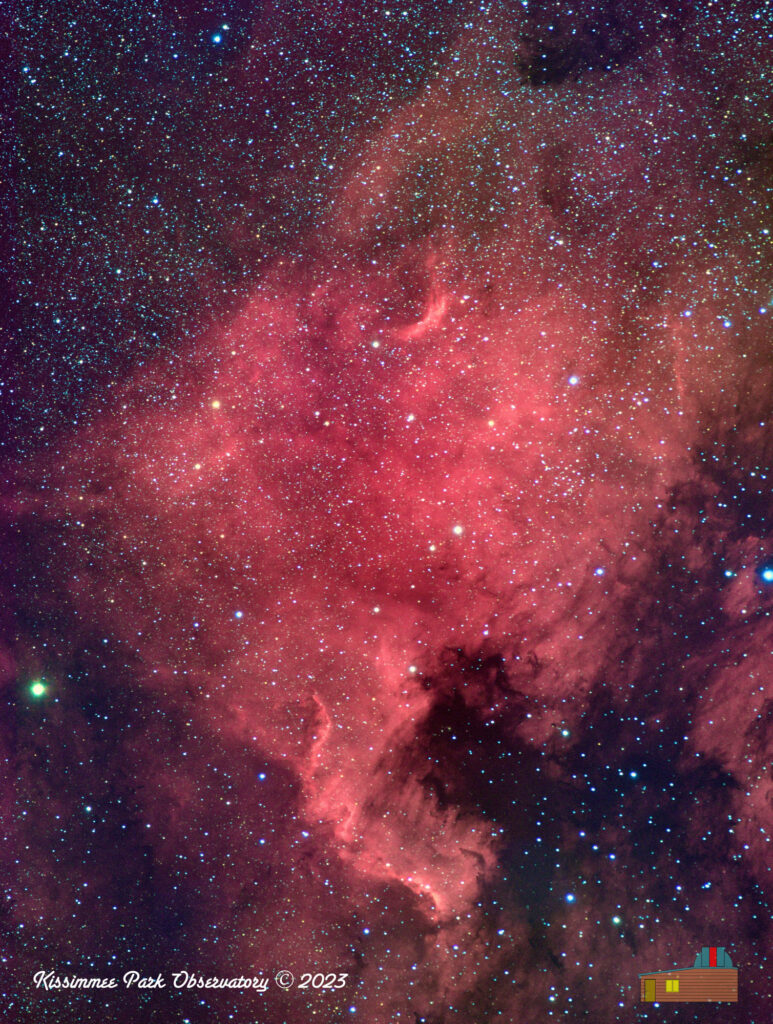Unveiling the Majestic North American Nebula: NGC 7000
Introduction
In the vast expanse of the cosmos, there are celestial wonders that captivate our imagination and leave us in awe of the beauty of the universe. One such marvel is the North American Nebula, also known as NGC 7000. This ethereal nebula, with its striking resemblance to the continent it is named after, has been a source of fascination for astronomers and stargazers alike. Join us as we embark on a journey to explore the enigmatic beauty of NGC 7000 and unravel the secrets it holds.
A Celestial Portrait
NGC 7000, located approximately 1,600 light-years away in the constellation Cygnus, is an emission nebula that spans over 100 light-years. Its mesmerizing beauty is illuminated by the intense radiation emitted by a young and massive star, Deneb. The nebula’s stunning red glow is a result of the hydrogen gas within it being excited by Deneb’s energy. This emission nebula is a testament to the awe-inspiring process of star formation and the interplay of cosmic forces.
The North American Nebula’s Unique Shape
What sets NGC 7000 apart from other nebulae is its distinct shape, which remarkably resembles the continent of North America. The intricate patterns within the nebula, created by dark interstellar dust, give rise to this uncanny resemblance. The Gulf of Mexico, Florida, and even the Great Lakes can be discerned within its boundaries, making NGC 7000 a stunning cosmic portrait that sparks our imagination.
Observing the Nebula
While NGC 7000 can be observed with the naked eye under (very)dark skies, a pair of binoculars allows us to truly appreciate its details. Astrophotographers have captured breathtaking images of NGC 7000, showcasing its mesmerizing beauty and inspiring wonder in those who behold them.
Unraveling the Mysteries
The North American Nebula continues to intrigue astronomers, who seek to unravel the secrets concealed within its cosmic tapestry. Recent studies have revealed the presence of protostars, newborn stars in the early stages of formation, within the nebula. These young stellar objects offer valuable insights into the processes of star birth and the evolution of the universe. By studying NGC 7000, scientists hope to deepen our understanding of the fundamental forces that shape our cosmos.
Conclusion
The North American Nebula, NGC 7000, is a testament to the intricate beauty and grandeur of our universe. Its resemblance to the continent it is named after, combined with its vibrant colors and celestial dance of stars, makes it a true marvel to behold. As we gaze upon NGC 7000, we are reminded of the boundless wonders that lie beyond our earthly realm. The North American Nebula invites us to explore, learn, and appreciate the awe-inspiring mysteries of the cosmos.
Image Info
This image of the North American Nebula (NGC 7000) is true color. This was an experimental image construction, in that I used Hydrogen Alpha narrowband for Red, and wideband Green, and wideband Blue for green and blue respectively. So very much standard RGB, but I used deep red Hydrogen alpha in the red channel. The Ha filter really brings out the nebula and totally cuts out light pollution.
In 2021, I imaged NGC 7000, but constructed the image in the Hubble Palette (SHO false color). That image is more detailed as SHO is designed to bring out the finest nebular structure. But this image is more natural as it is accurate color.
- Imaged from the KPO field in Saint Cloud, Florida in October 2023
- Camera : ZWO ASI1600MM Pro
- Lens: Canon 100-400 f/5.6L lens, set to 387mm
- Mount: iOptron SmartEQ Pro
- Hydrogen Alpha: 20 subframes of 300s = 100 min integration, assigned to Red
- Green: 9 subframes of 300s = 45 min integration, assigned to Green
- Blue: 11 subframes of 300s = 55 min integration, assigned to Blue
- Total integration time: 200 min = 3.3 hours
- Captured via ASIAir Pro automation
- Optical tracking via ASIAir automation, currently using ST4 mount control via the ASI120MM-S guide camera
- Separate channels stacked and HaGB integrated in Astro Pixel Processor
- Final processing in Aperture

